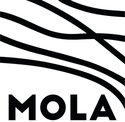Identification and quantification of archaeological projects arising from aggregates extraction in Greater London
Museum of London Archaeology, 2011. https://doi.org/10.5284/1000140. How to cite using this DOI
Data copyright © Museum of London Archaeology unless otherwise stated
This work is licensed under the ADS Terms of Use and Access.
Primary contact
David
Bowsher
Director of Research
Museum of London Archaeology
Mortimer Wheeler House
46 Eagle Wharf Road
London
N1 7ED
UK
Tel: 020 7410 2285
Resource identifiers
- ADS Collection: 1034
- ALSF Project Number: 5812
- DOI:https://doi.org/10.5284/1000140
- How to cite using this DOI
Overview
The primary aim of the ALSF Project was to identify and quantify archaeological investigations arising from aggregates extraction in Greater London and to access the extent to which the results of these investigations have been made publicly available.
Soft aggregate deposits (sands and gravels) form the drift geology for much of Greater London. These deposits originated as a series of Pleistocene river terrace deposits, which represent the former floodplains of the Thames and its tributaries and are arranged in an irregular flight of steps in the valley side, with the oldest at the top and the youngest at the bottom. Palaeolithic-age deposits are typically preserved in locations close to the interface of gravel terraces or within them.
Aggregate deposits around London have been exploited since the foundation of the Roman city in c AD 50. Levels of aggregate extraction increased to provide materials for the expansion of London during the later medieval period, the post medieval period and again with the massive expansion of London at the end of the 19th century. Early extraction typically comprised small-scale hand dug pits. For much of the 20th century aggregate extraction has been undertaken by mechanised means on an industrial scale at many sites in Greater London, with a particular increase occurring during and after World War I and II and during the reconstruction and growth of the metropolis in the 1950s to 1970s. Road improvement schemes of the 1980s and 1990s, including the construction of the M25 led to a further demand for aggregates.
Digital Archive
The digital archive comprises the final project report (two volumes):
Molina-Burguera, G. 2011: Identification and quantification of archaeological projects arising from aggregates extraction in Greater London. ASLF Project No. 5812. Museum of London Archaeology.
The report is accompanied by the project database.







